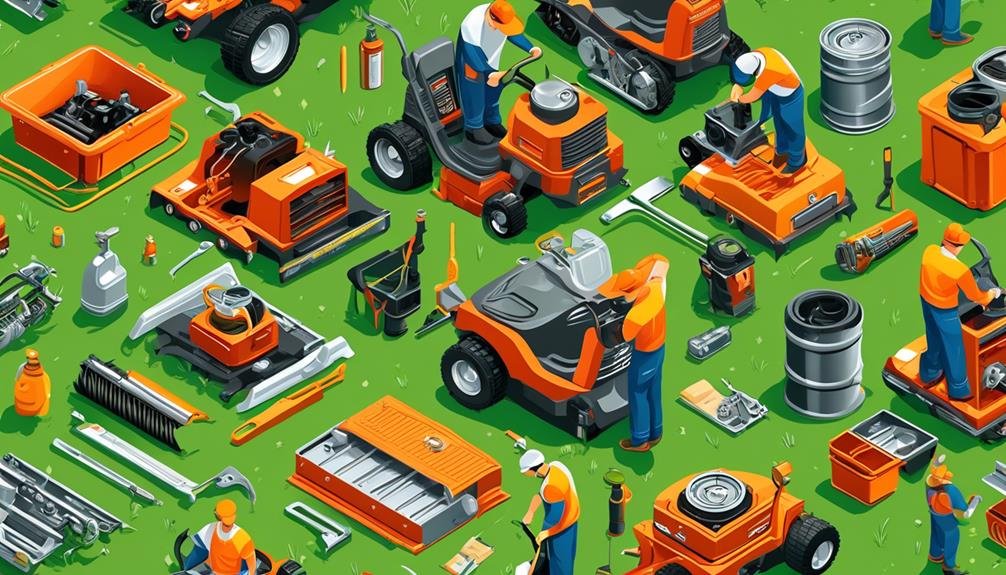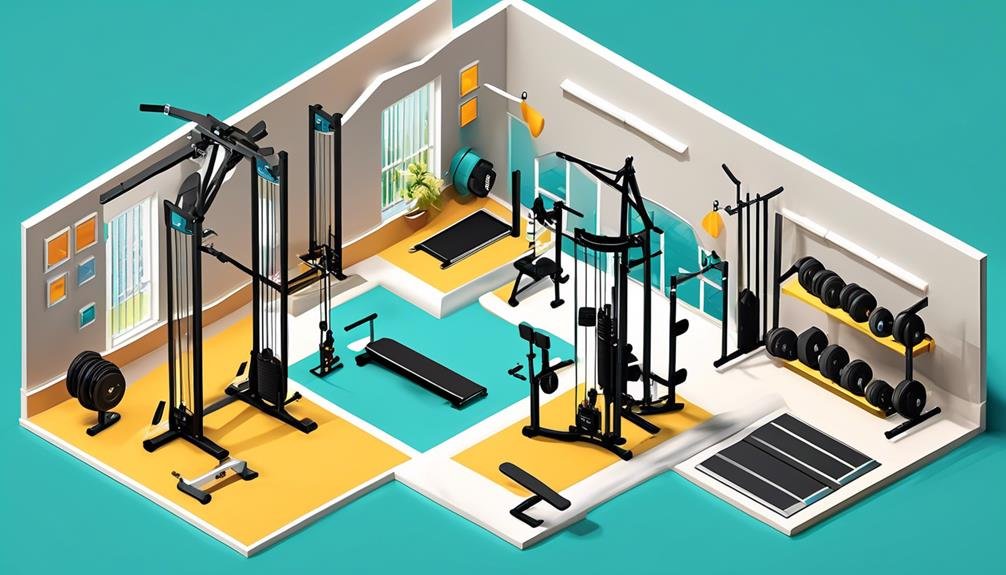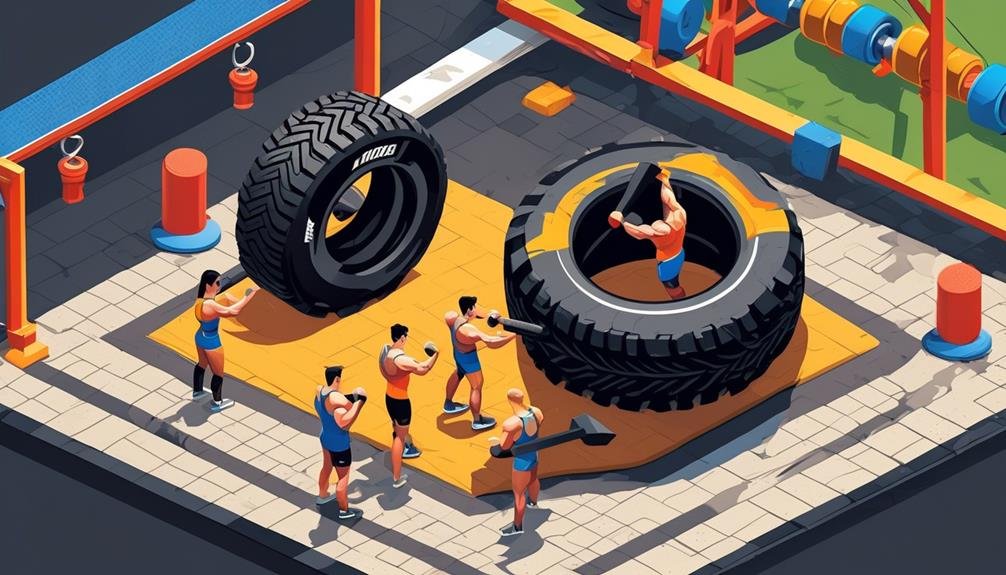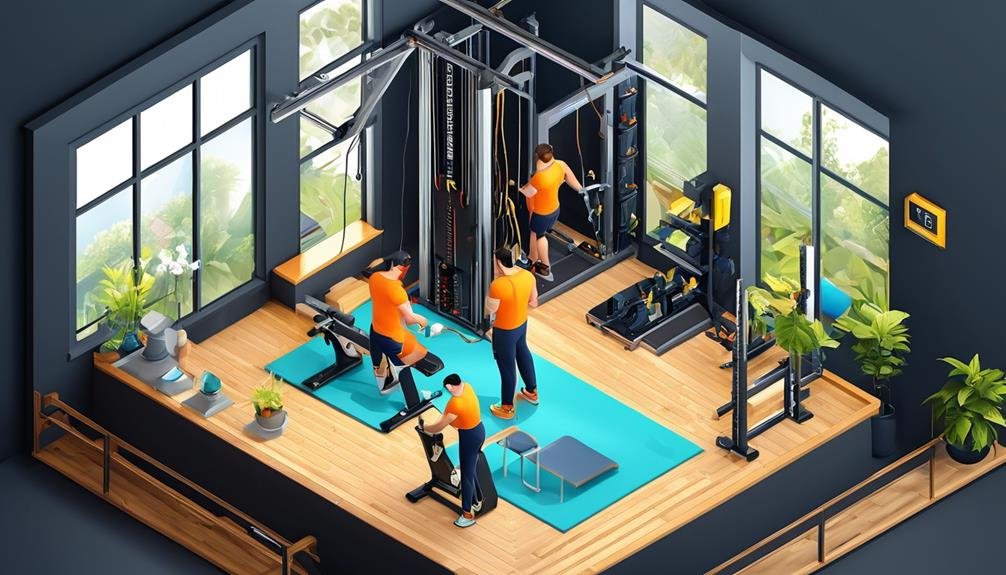Disclaimer: This content is for informational purposes only and does not replace professional medical advice, diagnosis, or treatment. Always consult a qualified healthcare provider before beginning any new exercise program.
Imagine your equipment as a well-oiled machine, humming along smoothly, each part working in perfect harmony. But just like any machine, it requires regular maintenance to keep it running at its best.
The question is, which maintenance tasks can you tackle yourself and when should you call in the professionals? In this discussion, we will explore the different levels of equipment maintenance, from simple routine tasks to complex repairs, and help you determine which ones you can handle on your own and which ones might require the expertise of a trained technician.
So, buckle up and get ready to discover the secrets of equipment maintenance that will keep your machines running like a finely tuned symphony.
Key Takeaways
- Conduct regular safety inspections and troubleshoot basic issues to ensure equipment safety and functionality.
- Perform routine cleaning and lubrication to prevent dirt and debris buildup, as well as maximize equipment performance and longevity.
- Regularly replace filters to maintain proper equipment functioning and efficiency.
- Inspect and adjust belts, chains, and electrical connections to prevent wear, misalignment, and electrical hazards.
Safety Inspections
To ensure the safety of your equipment, conducting regular safety inspections is essential. Safety inspections involve a thorough examination of your equipment to identify any potential hazards or issues that could compromise its performance or pose a risk to operators. These inspections should be carried out at regular intervals, preferably monthly or quarterly, depending on the nature of the equipment and its usage.
During a safety inspection, you should visually inspect all components of the equipment, including structural elements, electrical connections, and moving parts. Look for signs of wear and tear, loose or damaged parts, and any potential safety hazards such as exposed wires or leaky fluids. It's also important to test the equipment's safety features, such as emergency stop buttons or safety interlocks, to ensure they're functioning properly.
In addition to visual inspection, you may need to perform more in-depth tests or measurements to assess the equipment's safety. This could include electrical testing, load testing, or noise level measurements, depending on the type of equipment. It's important to follow manufacturer guidelines and safety standards when conducting these tests to ensure accurate and reliable results.
Routine Cleaning and Lubrication
Regular cleaning and lubrication of equipment is crucial for its optimal performance and longevity. By properly maintaining your equipment, you can minimize downtime, prevent costly repairs, and extend the lifespan of your machinery. Here are five important steps to consider when performing routine cleaning and lubrication:
- Inspect for dirt and debris: Start by visually inspecting the equipment for any dirt, dust, or debris that may have accumulated. Use a brush or compressed air to remove any particles that could interfere with the equipment's functionality.
- Use appropriate cleaning agents: Select the appropriate cleaning agents based on the type of equipment and the materials it's made of. Avoid using harsh chemicals that can damage the equipment and opt for mild detergents or specialized cleaning solutions.
- Clean thoroughly: Ensure that all surfaces and components are thoroughly cleaned, paying attention to hard-to-reach areas. Use lint-free cloths or brushes to remove dirt and grime effectively.
- Apply lubrication: After cleaning, apply the appropriate lubricant to the moving parts of the equipment. Choose lubricants specifically designed for the equipment's requirements, considering factors such as temperature, load, and speed.
- Follow manufacturer guidelines: Always refer to the manufacturer's guidelines and recommendations for cleaning and lubrication. These guidelines provide specific instructions on the type of cleaning agents and lubricants to use, as well as the recommended frequency of maintenance.
Filter Replacement
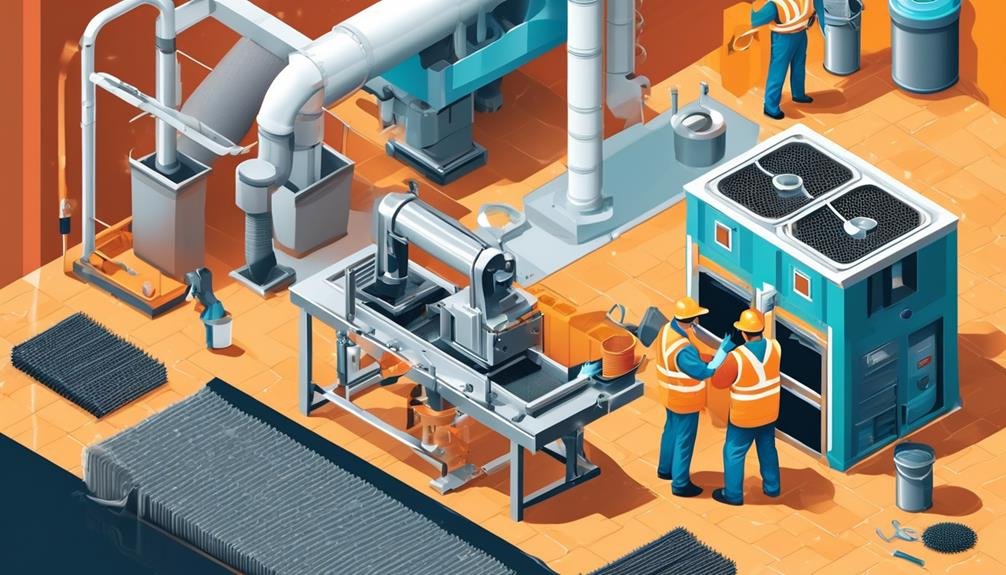
Replacing the filter is an essential maintenance task that ensures the proper functioning and longevity of your equipment. Filters play a crucial role in removing contaminants from the air, fluids, or gases that your equipment uses or produces. Over time, these filters can become clogged and less effective, which can result in reduced equipment performance and potential damage. To maintain optimal equipment operation, it's important to regularly replace the filters.
To replace a filter, start by identifying the location of the filter in your equipment. This may require consulting the equipment manual or seeking guidance from a professional. Once located, carefully remove the old filter, taking note of its size and type. It's crucial to select the correct replacement filter to ensure compatibility and optimal performance.
Before installing the new filter, clean the filter housing to remove any accumulated dirt or debris. This will prevent contamination of the new filter and promote better filtration efficiency. Install the new filter according to the manufacturer's instructions, making sure it fits securely and snugly into place.
After replacing the filter, test the equipment to ensure proper functioning. Monitor the equipment's performance and regularly inspect the filter, especially during periods of heavy use or in dusty environments. If the filter shows signs of clogging or reduced efficiency, replace it promptly to maintain optimal equipment operation.
Belt and Chain Adjustments
For optimal equipment performance and longevity, it's crucial to ensure proper belt and chain adjustments. Neglecting these adjustments can lead to premature wear and tear, decreased efficiency, and even equipment failure. By performing these adjustments regularly, you can maintain the optimal tension and alignment of the belts and chains, ensuring smooth operation and extending the lifespan of your equipment.
Here are five key steps to follow when performing belt and chain adjustments:
- Inspect the belts and chains for signs of wear, such as cracks, fraying, or stretching.
- Use a tension gauge to measure the tension of the belts and chains and adjust them to the manufacturer's recommended specifications.
- Check the alignment of the belts and chains by ensuring they run parallel to the pulleys and sprockets.
- Lubricate the chains and pulleys with a suitable lubricant to reduce friction and wear.
- Regularly monitor the tension and alignment of the belts and chains to catch any issues early and prevent further damage.
While some basic belt and chain adjustments can be performed by equipment owners, more complex adjustments may require the expertise of a professional. It's important to refer to the equipment manual and consult with a qualified technician if you're unsure about any aspect of the adjustment process.
Basic Troubleshooting and Repairs
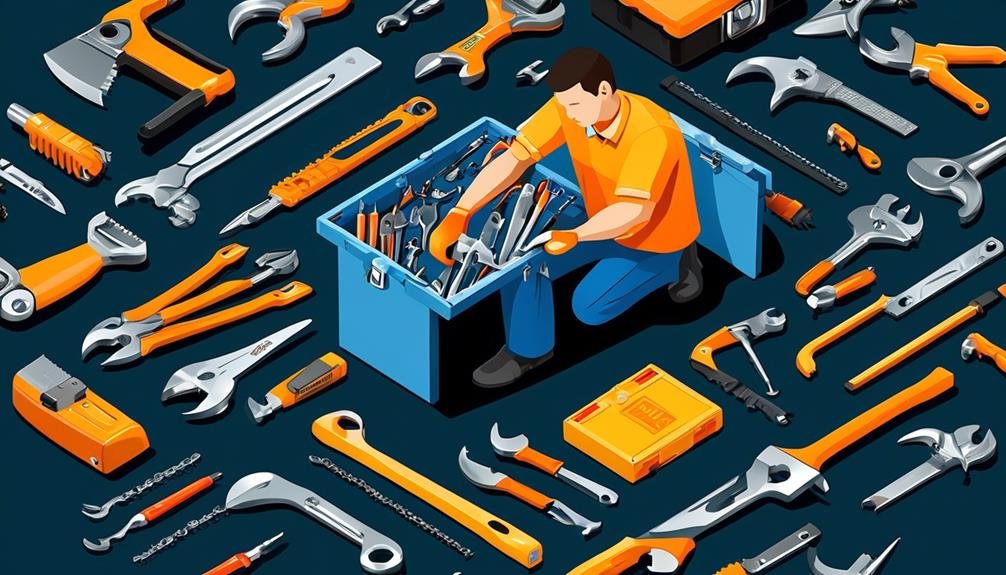
To effectively address basic troubleshooting and repairs, it's essential to have a thorough understanding of the equipment's functionality and how it relates to the previous subtopic of belt and chain adjustments. Basic troubleshooting involves identifying and diagnosing issues that may occur during equipment operation. This requires a keen eye for detail and the ability to identify abnormal behaviors or sounds. It's crucial to inspect all components of the equipment, including belts, chains, gears, and motors, for signs of wear, damage, or misalignment. Regularly lubricating moving parts is also important for optimal performance and longevity.
When it comes to basic repairs, it's important to have the necessary tools, knowledge, and skills. Common repairs may include replacing worn-out belts or chains, tightening loose bolts or screws, or adjusting misaligned components. It's crucial to follow the equipment manufacturer's guidelines and specifications during repairs to ensure safety and prevent further damage. If you're unsure about the repair process or lack the necessary skills, it's recommended to hire a professional technician who can effectively address the issue and prevent any potential hazards.
Electrical Component Maintenance
Maintaining the electrical components of equipment is crucial for ensuring optimal performance and preventing potential malfunctions. While some electrical component maintenance tasks can be done by yourself, others require the expertise of a professional technician. Here are some guidelines to help you determine which tasks you can handle and which ones should be left to the experts:
- Cleaning and visual inspection: Regularly clean the electrical components using a soft, dry cloth. Inspect for any signs of damage, loose connections, or overheating.
- Tightening connections: Ensure that all electrical connections are tight and secure. Loose connections can lead to power loss, overheating, and potential electrical hazards.
- Replacing worn-out components: If you notice any electrical components that are worn-out or damaged, it's best to replace them immediately. Faulty components can cause system failures and pose safety risks.
- Testing electrical circuits: Use a multimeter or electrical tester to check the voltage, current, and resistance of electrical circuits. This helps identify any issues with the circuitry that may affect equipment performance.
- Calibrating electrical instruments: If your equipment uses electrical instruments or sensors, regular calibration is necessary to maintain accuracy. This ensures reliable readings and prevents errors in data analysis.
Complex Machinery Calibration and Repair
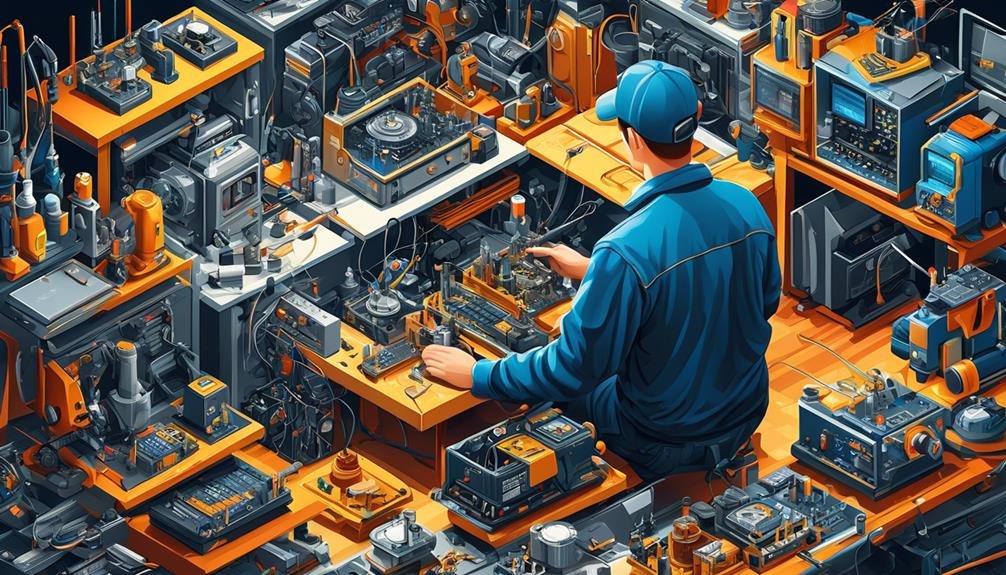
When calibrating and repairing complex machinery, it's essential to have a thorough understanding of the equipment's specifications and operating principles. Complex machinery often consists of intricate systems and components that require precise calibration and repair techniques. This level of expertise ensures that the machinery operates efficiently and safely, minimizing downtime and maximizing productivity.
Calibrating complex machinery involves adjusting and aligning various components to meet specific performance standards. This typically requires specialized tools and knowledge of the machinery's tolerances and specifications. It's crucial to follow the manufacturer's guidelines and procedures to ensure accurate calibration.
Repairing complex machinery involves diagnosing and fixing issues that may arise during operation. This can include replacing faulty components, repairing damaged parts, or addressing malfunctions in the machinery's systems. Repairing complex machinery often requires a deep understanding of the equipment's mechanical, electrical, and hydraulic systems.
Due to the technical nature of complex machinery calibration and repair, it's recommended to hire professionals with expertise in this field. These professionals possess the necessary knowledge and experience to ensure accurate calibration and effective repairs. They're familiar with the specific requirements of different types of complex machinery and can provide tailored solutions to address any issues that may arise.
Frequently Asked Questions
How Often Should I Perform Safety Inspections on My Equipment?
Perform safety inspections on your equipment regularly to ensure optimal functionality and minimize potential risks. Check for any signs of wear and tear, loose parts, or damage. Promptly address any issues or hire a professional for assistance.
What Are the Best Cleaning Products to Use for Routine Cleaning and Lubrication?
To determine what equipment maintenance tasks you can do yourself versus hiring out, consider factors such as your expertise, available time, and the complexity of the task. It's crucial to prioritize safety and consult manufacturer guidelines.
How Do I Know When It's Time to Replace the Filters in My Equipment?
To know when it's time to replace filters in your equipment, check the manufacturer's recommendations or look for signs of reduced performance or clogging. Regularly inspect and clean filters to prolong their lifespan and maintain optimal equipment functioning.
What Are the Signs That Indicate the Need for Belt and Chain Adjustments?
If you notice any unusual noises or vibrations, or if the belt or chain is visibly loose or slipping, it may be time for adjustments. Check the manufacturer's guidelines for specific instructions or consult a professional.
Are There Any Specific Tools or Equipment I Need for Basic Troubleshooting and Repairs?
To troubleshoot and repair equipment, you'll need basic tools like screwdrivers, wrenches, and pliers. Additionally, specialized equipment like multimeters and diagnostic software may be necessary for more complex tasks.
Conclusion
In conclusion, knowing which equipment maintenance tasks you can handle yourself and which ones are better left to professionals is crucial for maintaining the efficiency and longevity of your equipment.
Safety inspections, routine cleaning and lubrication, filter replacement, and belt and chain adjustments are tasks that can typically be done by yourself.
However, for more complex troubleshooting, repairs, electrical component maintenance, and complex machinery calibration and repair, it's recommended to hire out professionals to ensure the proper functioning of your equipment.
